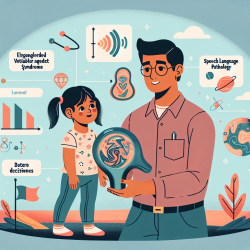Introduction to Behavioral Addictions
The landscape of addiction research is evolving, with increasing attention on non-substance or behavioral addictions. The article, "Commentary on: Are we overpathologizing everyday life? A tenable blueprint for behavioral addiction research," by Billieux et al. (2015), provides a critical examination of how behavioral addictions are defined and classified. This commentary is a valuable resource for practitioners seeking to refine their understanding and improve their skills in diagnosing and treating behavioral addictions.
Key Insights from the Research
The article raises important questions about the potential overpathologization of everyday behaviors and the implications for public health. The authors argue for a systematic approach to defining behavioral addictions, emphasizing the need to differentiate between normal and abnormal levels of engagement in activities such as gaming, internet use, and eating.
One of the core elements of addiction identified in the research is the continued engagement in a behavior despite adverse consequences. This understanding is crucial for practitioners as it guides the identification of behaviors that may warrant clinical attention.
Implications for Practitioners
Practitioners can benefit from this research by adopting a more nuanced approach to diagnosing behavioral addictions. The following strategies can be implemented:
- Adopt a Systematic Approach: Consider a broad range of factors, including psychological, genetic, and cultural influences, when assessing potential behavioral addictions.
- Focus on Core Features: Evaluate behaviors based on core addiction features, such as poor self-control and compulsive engagement, to determine their potential impact on individuals.
- Stay Informed: Engage with ongoing research and discussions in the field to remain updated on emerging trends and diagnostic criteria.
Encouraging Further Research
The article highlights the need for further research to bridge current knowledge gaps in behavioral addiction. Practitioners are encouraged to contribute to this body of work by:
- Participating in Research: Collaborate with academic institutions to conduct studies that explore the nuances of behavioral addictions.
- Sharing Clinical Insights: Provide feedback on emerging diagnostic criteria based on clinical experiences to refine and validate research findings.
Conclusion
The insights from the article by Billieux et al. (2015) offer a valuable blueprint for practitioners looking to enhance their skills in identifying and treating behavioral addictions. By adopting a systematic approach and engaging with ongoing research, practitioners can contribute to the development of more effective diagnostic and treatment strategies.
To read the original research paper, please follow this link: Commentary on: Are we overpathologizing everyday life? A tenable blueprint for behavioral addiction research.










